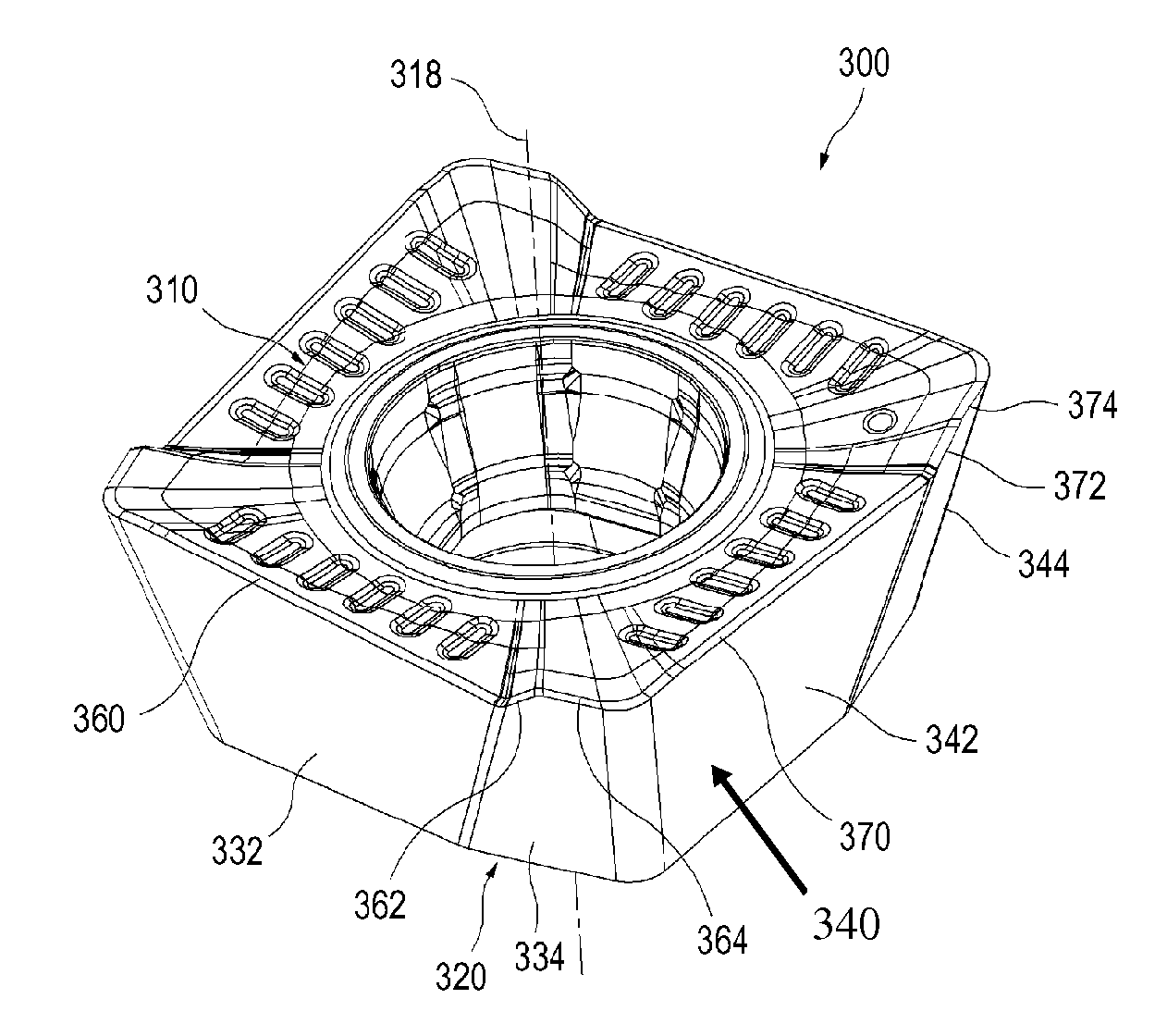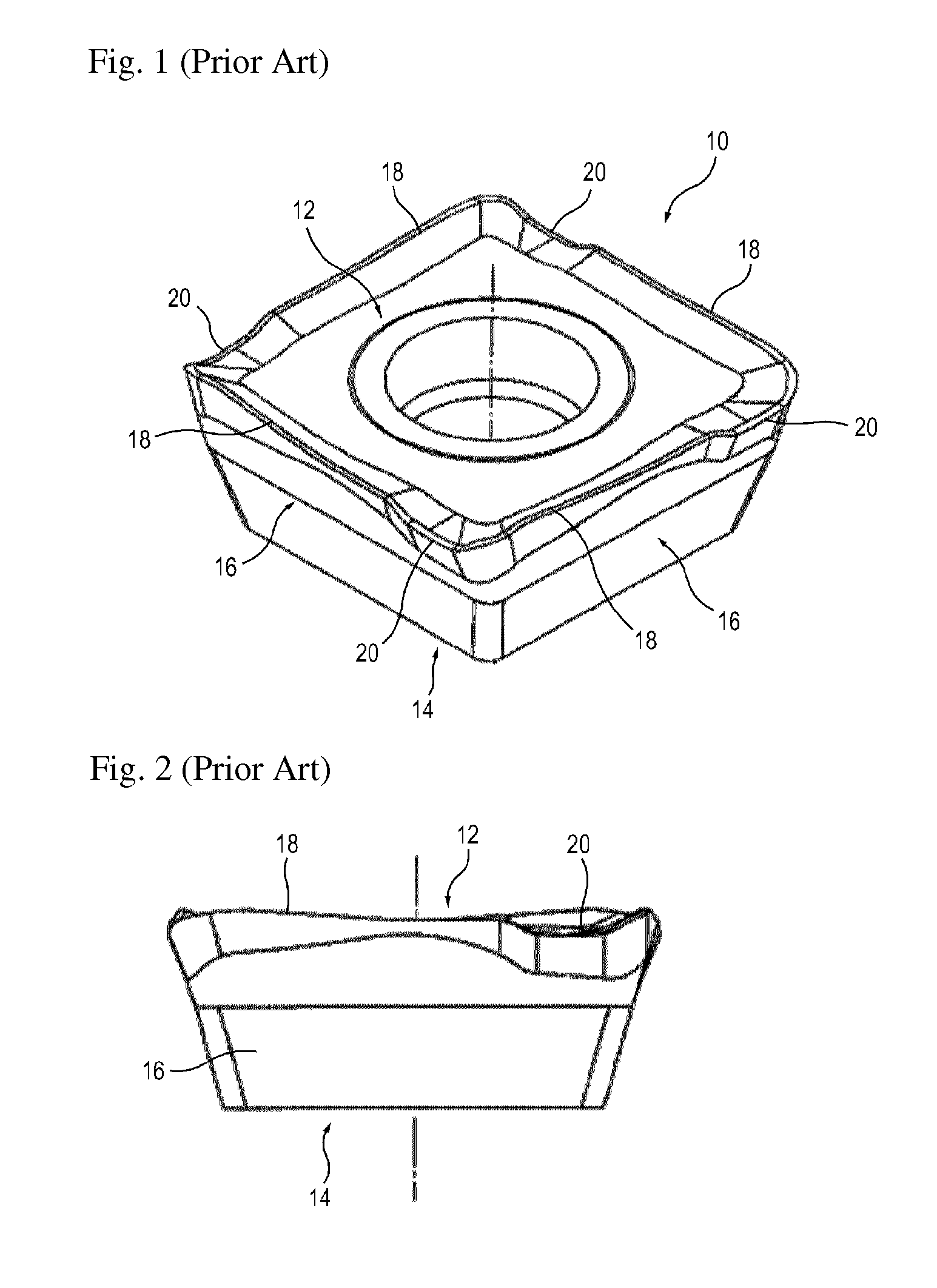Cutting Insert
- Summary
- Abstract
- Description
- Claims
- Application Information
AI Technical Summary
Benefits of technology
Problems solved by technology
Method used
Image
Examples
Embodiment Construction
[0041]The cutting inserts according to the present invention are described below in detail with reference to the accompanying drawings.
[0042]FIG. 6 is a perspective view of a cutting insert according to the first embodiment of the present invention. As shown in FIG. 6, the cutting insert (100) includes a top surface (110), a bottom surface (120) and a plurality of side surfaces that connect the top surface (110) and the bottom surface (120). The top and bottom surfaces (110, 120) face each other and have a generally triangular shape extending in parallel. The side surfaces (130, 140, 150) are inclined at an obtuse angle with respect to the bottom surface (120) and at an acute angle with respect to the top surface (110). The side surfaces (130, 140) each consist of a first side surface (132, 142) and a second side surface (134, 144). The first side surface (132, 142) consists of a first curved surface (136, 146), which adjoins the top surface (110), and a second planar surface (138, ...
PUM
| Property | Measurement | Unit |
|---|---|---|
| Angle | aaaaa | aaaaa |
| Angle | aaaaa | aaaaa |
Abstract
Description
Claims
Application Information
 Login to View More
Login to View More - R&D
- Intellectual Property
- Life Sciences
- Materials
- Tech Scout
- Unparalleled Data Quality
- Higher Quality Content
- 60% Fewer Hallucinations
Browse by: Latest US Patents, China's latest patents, Technical Efficacy Thesaurus, Application Domain, Technology Topic, Popular Technical Reports.
© 2025 PatSnap. All rights reserved.Legal|Privacy policy|Modern Slavery Act Transparency Statement|Sitemap|About US| Contact US: help@patsnap.com



